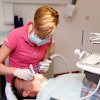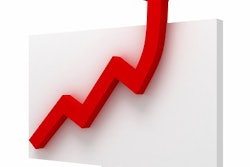
An overall shortage of more than 15,000 dentists is projected in the U.S. by 2025, according to a report released last week by the U.S. Department of Health and Human Services' Health Resources and Services Administration (HRSA). However, the reverse is projected to be true for dental hygienists, as the supply will be greater than the demand.
As of 2012, the HRSA estimated almost 191,000 full-time equivalent (FTE) dentists were practicing in the U.S., but there was an estimated demand of almost 198,000 FTEs, leaving a shortfall of 7,000. The HRSA report projects that the national demand for dentists will increase by 20,400 FTEs by 2025, while the number of dentists practicing will number just over 202,000.
However, the American Dental Association Health Policy Institute, in a commentary, recommended interpreting the HRSA's overall conclusions with some caution. ADA The HRSA's critical assumption might not match up with the best available evidence, according to Marko Vujicic, PhD, chief economist and vice president of the institute.
“However, a critical assumption is that dental care utilization patterns will remain constant through 2025, and, in my view, this is inconsistent with the best available evidence.”
"HRSA has developed a very useful empirical model. However, a critical assumption is that dental care utilization patterns will remain constant through 2025, and, in my view, this is inconsistent with the best available evidence," Vujicic is quoted in an ADA News story.
Vujicic cited research in his commentary showing there is significant unused capacity in dental offices, and that dental care utilization has been falling steadily among adults for more than a decade.
"The data suggest the dental care delivery system in the U.S. has the capacity to absorb more patients," he told ADA News. "In fact, there is compelling research to show that, in general, the main barriers to dental care have little to do with the availability of dentists."
According to the HRSA report, the national demand for dentists will increase 10% by 2025. All 50 states and the District of Columbia are projected to experience this shortage, the report noted.
Projected changes in supply and demand for dentists between 2012 and 2025 differ by state, resulting in a variation in the extent of shortage across states in 2025.
States projected to experience the greatest shortfalls in the number of dentists in 2025 are California (with 1,234 fewer FTE dentists than needed), Florida (with 1,152 fewer FTE dentists than needed), and New York (with 1,024 fewer FTE dentists than needed).
| Projected U.S. supply & demand for dentists | |
| Supply | FTE |
| Estimated supply, 2012 | 190,800 |
| Estimated supply growth, 2012-2025 | 11,800 |
| New entrants | 70,700 |
| Attrition | -60,600 |
| Change in average work hours | 1,700 |
| Projected supply, 2025 | 202,600 |
| Demand | FTE |
| Estimated demand, 2012 | 197,800 |
| Estimated demand growth, 2012-2025 | 20,400 |
| Projected demand, 2025 | 218,200 |
| Projected supply (minus) demand, 2025 | -15,600 |
Dental hygienists
For dental hygienists, however, the HRSA report projects greater supply than demand in the workforce. The national demand for dental hygienists is projected to grow by 15,500 FTEs to 169,100 FTEs in 2025. However, the report projects that the number of dental hygienists will grow by more than 43,00 FTEs to over 197,000 FTEs in 2025.
This excess at the national level masks projected shortages in some states, according to the report.
States projected to have the greatest surplus in dental hygienist are California (with 5,154 additional FTEs than needed), Texas (with 3,324 additional FTEs than needed), and Florida (with 2,768 additional FTEs than needed).
Five states are projected to experience a smaller growth in dental hygienist supply relative to demand, resulting in shortages by 2025. Shortages of dental hygienists in Mississippi, Montana, North Dakota, South Dakota, and West Virginia are expected to range from 21 to 93 FTEs.



















